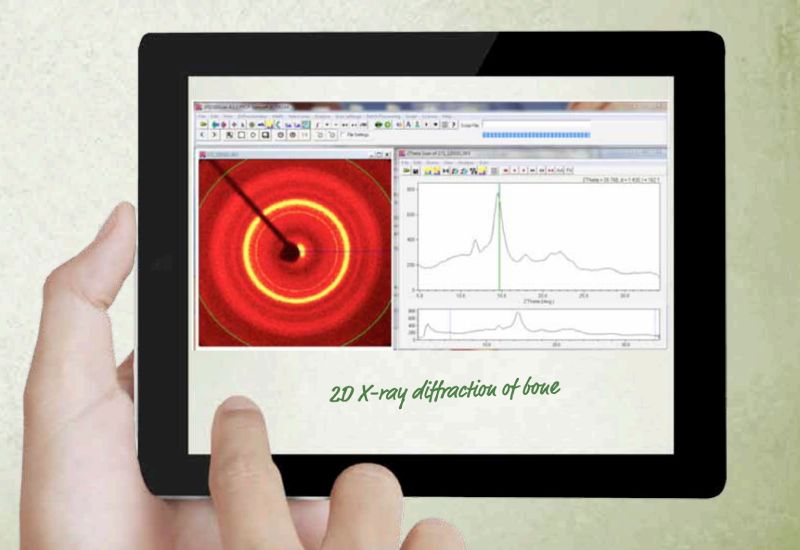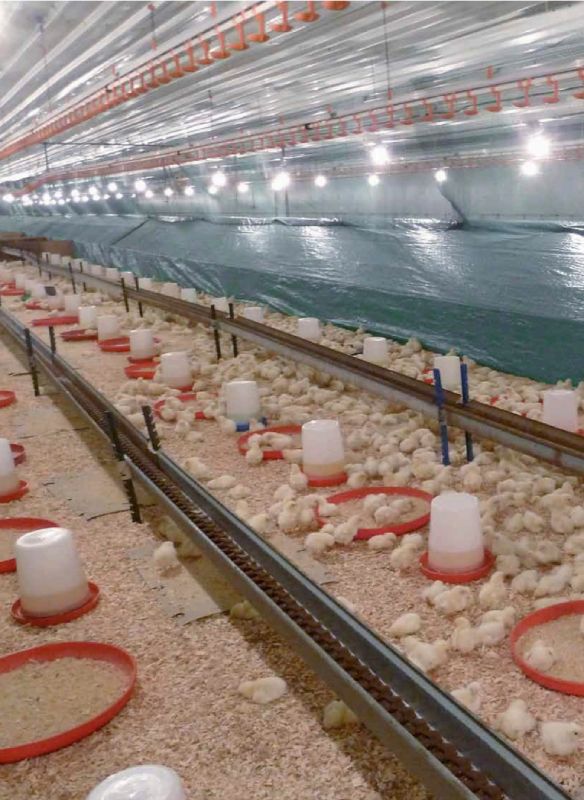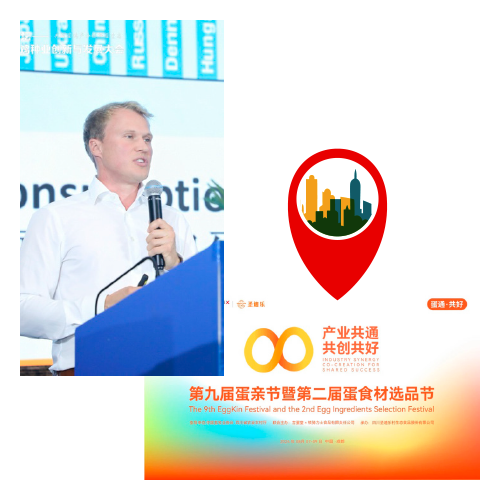Eggs are a source of highly digestible protein that have done much to improve world nutrition. To enhance the sustainability of production there are persistent demands to increase egg quality and the length of time in lay. However, a longer period of egg production can come with correlated problems of bone quality
Bones come in a variety of shapes and sizes and have a complex internal and external structure. The hard outer layer of bones is composed of cortical bone, also called compact bone. Filling the interior of the bone is the cancellous bone, also known as trabecular or spongy bone tissue. It has a more open structure and its spaces are filled with bone marrow and, in the case of laying hens, a form of bone called medullary bone. The cortical and cancellous bone types are the key components that give the skeleton its strength.
Osteoporosis
The medullary bone acts as a special form of calcium storage. This special bone is absorbed and laid down rapidly with the daily cycle of shell formation. The cells which form bone are known as osteoblasts. when hens are laying eggs, these cells are almost exclusively active in forming medullary bone.There are also bone absorbing cells which are known as osteoclasts. They reabsorb the medullary bone to form the shell and they reabsorb the cortical and cancellous bone. This results in a gradual weakening of the skeleton over the lifetime of the hen. As in humans, this is known as osteoporosis and it can increase the chances of bone breakage.
Keel damage
Alternative housing systems can make the problem worse with increases in breakage and keel bone deformities. This is caused by the increased opportunity for damage due to collisions, etcetera. Keel damage has been identified as a particular problem, with incidences of keel damage in commercial flocks varying from 20 to 80%. As the demand for economical food is unlikely to reduce, solutions to improve bone health are required if the welfare of the laying hen is not to be compromised.Improving bone strength
“Our research with LOHMANN TIERZUCHT has focused on developing approaches to improve bone strength”, says Heather McCormack. “As a consequence the welfare of the laying hen will also improve whilst maintaining egg production.” The research team used a programme of retrospective selection over nine generations. “we produced hens with a two-fold difference in tibiotarsal breaking strength. we demonstrated that bone characteristics can be improved by selection and that there is the genetic potential within commercial pure lines to both lay a high number of eggs and have good bone quality at the end of lay.” Most importantly, this improvement in bone strength was accompanied by a reduction in the incidence of fractures.Genes
The next task was to identify the Quantitative Trait Loci (QTL). These are regions of DNA which contain or are linked to genes that underlie the bone quality traits. A large QTL was identified on chromosome 1 for component traits. Tibiotarsal breaking strength for instance. “we were confident that selection with markers in this region would improve bone strength”, McCormack says. “As the revolution in genetics advanced, we were able to complete high density genotyping of this region of the genome in a recent generation of a white leghorn line. This produced DNA markers which were highly associated with tibiotarsal breaking strength. They linked to about a ten percent increase in strength and density of the structural bone.” so the application of markers has the ability to improve bone strength and improve the welfare of laying hens when applied in a breeding programme. This investment in research over the last twenty years has now put us in a position to make an impact on bone strength and hen welfare.”New project
The team is about to start a new project funded through the ANIHwA programme of the european Union. McCormack: “Over the next three years we will develop and validate a number of complimentary approaches to improve bone quality.”1) A study will be carried out, using large genotyping arrays which are now available. This will be done to identify further genetic markers for bone quality. All these markers will be validated in other genetic lines of laying hens for use in selection.
2) Using another tool of the revolution in genetics called ‘nextgeneration sequencing’ the research team has identified a novel
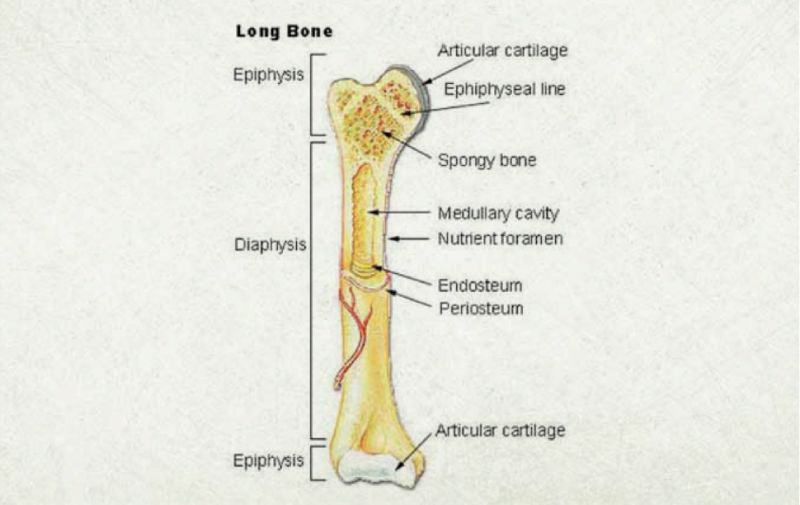
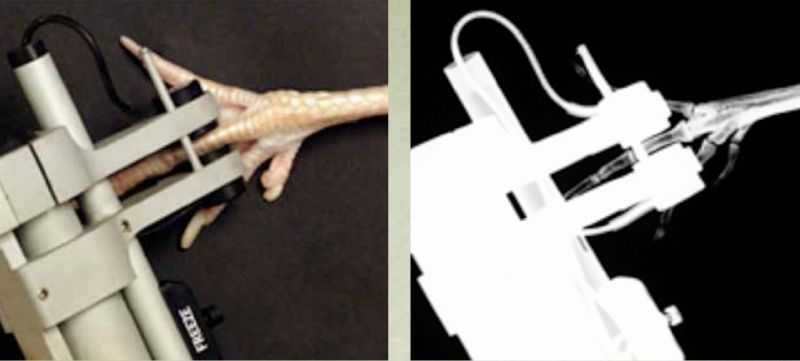
gene. “we believe this gene may be responsible for some of the differences in bone strength”, says McCormack. “This in turn has led to the identification of metabolic marker. we believe this marker can also predict variance in bone quality. Measurement of this metabolite early in life could predict bone quality at the end of lay.”
3) Finally, ultrasound has been successful in determining bone quality in humans. The team’s initial studies with chicken’s toes demonstrated good genetic correlation with bone strength. Technology has advanced since these studies. It will now utilise so called ‘axial transmission’ in the surface of cortical bone. This will allow the keel and the long bones to be analysed.
Constant remodeling
The ability to measure bone quality in living hens will create a big advantage in improving bone health.“we will discover and test new ways of selecting hens to improve bone quality. Plus, we will learn more about the biology of bone formation of avian bone and the factors which influence it. Bone is a living tissue that is constantly being replaced and reshaped, following injuries such as fractures and micro-damage (which occurs during normal activity)”, McCormack explains. “Bone tissue is constantly being remodeled. This is a lifelong process where mature bone is removed from the skeleton and new bone is formed. ” These processes produce characteristic changes in the composition of the bone. The team will use sophisticated analytical techniques such as Infrared spectrometry, Optical emission spectroscopy and 2D X-ray Diffraction, to further inform us about the ultrastructure and composition of the bone.
Practical solution
“By using several approaches we want to deliver a practical solution to breeders that will realise the genetic potential of laying hens with better bone”, McCormack states. “we expect to demonstrate that combinations of genetic markers can explain suf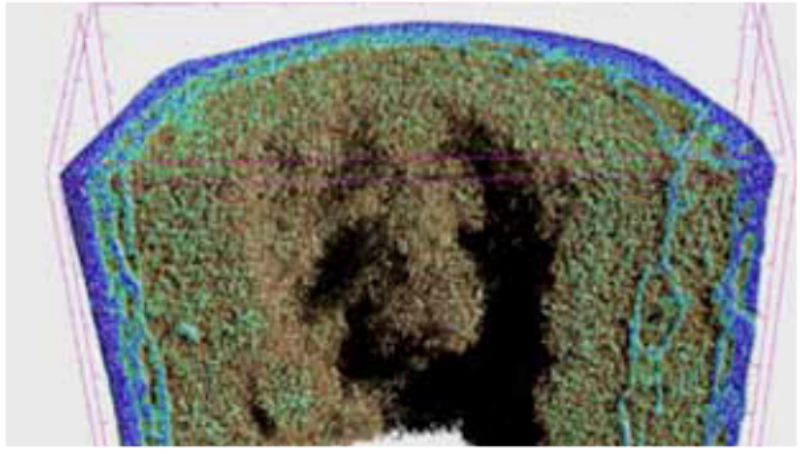
Computed tomography of bone showing medullary bone in green
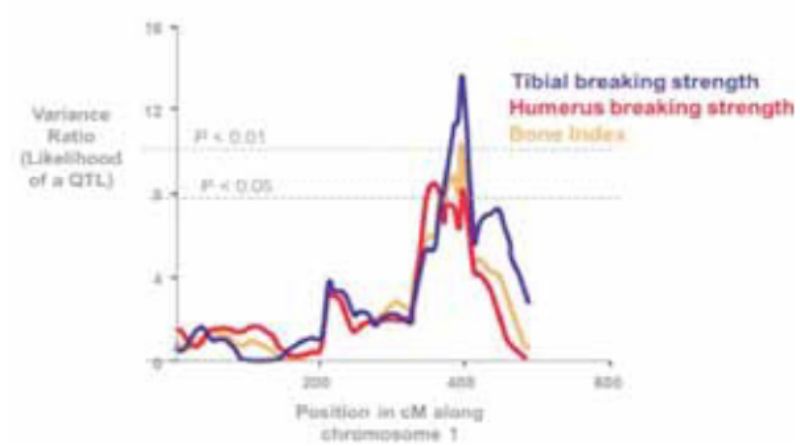
ficient variance in bone quality to be used in selection. And that the markers work in several lines of chicken. we also expect that the new non-destructive measurement of bone property phenotypes will have sufficient correlation with traditional but destructive measures of bone quality for it to be used predictively in selection. Finally, we will also be able to further our understanding of avian osteoporosis and lay the foundation for future advances.”
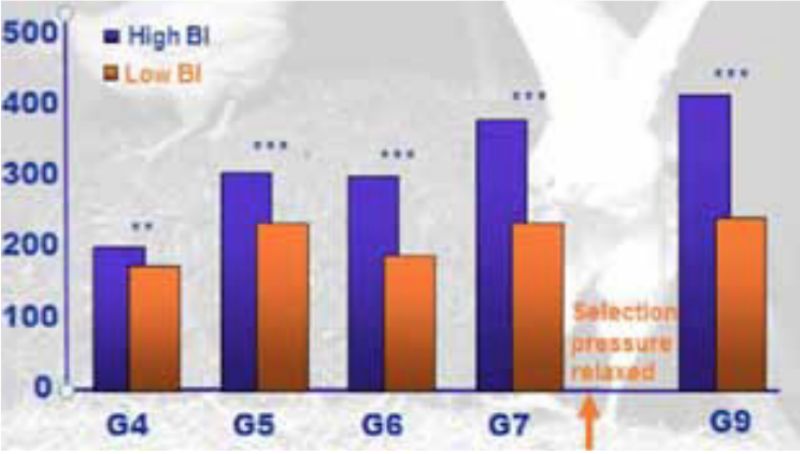
Tibitorsal breaking strength (N)
Ian C. Dunn, Heather McCormack and Bob Fleming, The Roslin Institute and RDS(V)S, University of Edinburgh, Scotland, U.K., Dirk Jan DeKoning, Swedish University of Agricultural Sciences, Sweden and Alejandro Rodriguez-Navarro, University of Granada, Spain.
